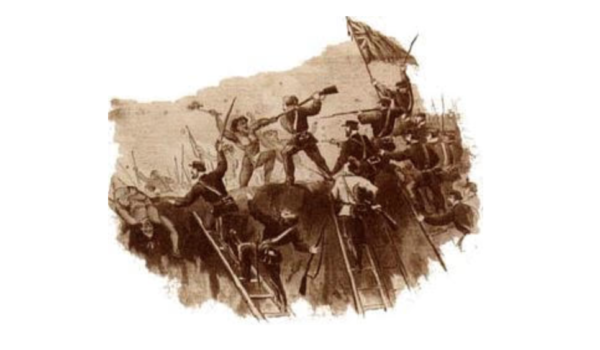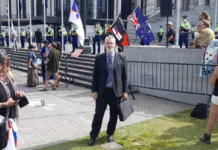
THE TRAILERS for “That’s A Bit Racist” had not filled me with confidence. There was a tone that positively yelled: “Anyone who doesn’t like the sound of this programme is almost certainly part of the problem.” In other words, the programme showed every sign of making huge assumptions about the history, nature and extent of racism in New Zealand. The dumbed-down script, delivered in the overly-familiar diction of the contemporary radio and television host, only deepened my suspicions.
It saddened me, because if there’s a subject that positively screams out for intelligent scrutiny in contemporary New Zealand, it’s racism. That’s why I was willing “That’s A Bit Racist” (TABR) to be better than its publicity. Sadly, it was not. If anything, it was worse. I managed about 5 minutes of the programme and then gave up in disgust.
Fiona Rae’s review of TABR, for The Listener of 6 July 2019, begins with a quote from Arama Rata, a Senior Research Fellow at the University of Waikato: “it’s not up to Maori and people of colour to educate Pakeha about racism, it’s something that Pakeha people should be doing among themselves”. I couldn’t agree more. And, what a pity it was that the makers of TABR didn’t heed her advice.
The most effective means of bringing home to Pakeha New Zealanders the nature and extent of the racism that has deformed their country’s past, and which continues to stain its present, is by presenting historical examples. Nothing has more impact than the official report, the newspaper clipping, the photograph, the diary entry, or the letter home. A simple historical narrative, built around these kinds of primary sources, leaves little room for denial. Presented with it, we are required to deal with it.
This was brought home to me with particular force quite recently when the Auckland-based historian, Scott Hamilton, took issue with my Daily Blog posting about White Supremacism. In that post I stated that: “It is important to acknowledge that a political entity driven by the principles of genuine white supremacy will be very different from one in which the official goal is racial assimilation, as was formerly the case in New Zealand.”
In short order, by offering example after example, Scott took apart my assertion that the expression of racism most typical of Pakeha New Zealanders up until the 1990s was their oft-expressed desire to see Maori (along with practically every other ethnic group) fully assimilated into New Zealand society. Those wishing to sample Scott’s mastery of the telling historical example need look no further than his excellent essay, posted on The Spinoff, entitled “New Zealand’s Long And Violent History Of Anti-Indian Racism”.
Does this quotation, from Scott’s essay, suggest that the first impulse of Pakeha New Zealanders when confronted by people of colour was assimilationist?
“The White New Zealand League, which was founded in Pukekohe in 1926, was a more genteel vehicle for racism. The League’s campaigns against Indian and Chinese migration were endorsed by the RSA, which passed a resolution at its 1926 conference reaffirming its commitment to a ‘white New Zealand’. The Auckland Trades Council also endorsed the League’s call for the deportation of all non-white migrants from New Zealand.”
It is to be regretted that the people behind TABR, Jane Andrews and Melanie Rakena of Jam TV, were not minded to make use of Scott’s historical research, or, indeed of the work of other New Zealand historians. A chat to Professor James Belich, for example, would likely have revealed the importance of a little book called “The Aryan Maori”, written by Edward Tregear, and published in 1885, which, according to Belich: “arguably ranks with the Treaty of Waitangi as a key text of Maori-Pakeha relations.”
Exploring the ramifications of “The Aryan Maori” (the content of which was, for many years, taught to New Zealand schoolchildren as anthropological fact) would have offered a fascinating supplement to Scott’s brutal evidence of Pakeha New Zealanders’ deeply ingrained racial prejudices.
Likewise, in relation to the complicated mix of virtues and vices represented in the story of “The Battle of Manners Street”, “The Dawn Raids”, “Bastion Point” and “The Springbok Tour”. Sadly, acknowledging that racism in New Zealand is a multi-layered and historically complex phenomenon would have contradicted TABR’s producer, Jane Andrews’, determination to “keep it light”.
As she told Fiona Rae: “Bashing people over the head never works. We’ve tried to make it something that people can watch and learn a little bit of New Zealand history.”
She’ll get no argument from me that TABR offers New Zealanders “a little bit of history”. The tragedy is that she didn’t offer them more. The interaction of cultures, especially in the context of the explosive expansion of European peoples across the planet that characterised the nineteenth century, is still in the process of being worked out. Complicating matters even further is a new pulse of mass human migration. Not from Europe this time, but from Asia, Africa and the Middle East.
Which is why, even in the second decade of the twenty-first century, those same anti-immigrant feelings, so well documented by Scott Hamilton, are again in evidence. The flip superficiality of TABR notwithstanding, racism is heavy. Very heavy. What on earth possessed Jam TV to keep it so light?






Part 1 of this “documentary” contained enough spurious facts in the guise of infotainment to ward off any intelligent viewer from even considering part 2.
Well I think Māori have the electorate seats as a result of those Māori who defected to crown forces. I say that I think this because I don’t recall the passage I read that would give me that impression but the Māori seats are real enough. Thus we have rulz.
To me the rulz are what seperate us from the rest of the animals. Of course I would have written them a little different. But Y’know this is why I’m sceptical about subscribing to this ideology of a racist system. But for some reason they still did deals with the crown and I or anyone else can not unwrite those deals.
Sam: “….but the Māori seats are real enough.”
On the face of it, those seats having been established so very early possibly makes NZ look as if it were a liberal haven: the beginnings of the “social laboratory” label it was later to acquire.
However. As always, the truth is more complex. From the history that I’ve read, it seems that they were established for the purpose of constraining the Maori vote. At that time, Maori outnumbered settlers, if I recall rightly, at least in critical electorates.
Over many years, I’ve discovered that other pakeha are generally ignorant about both the purpose of the Maori seats, and how early they were established. I wouldn’t be surprised if that ignorance extended to many Maori as well. And of course more recent migrants.
There’s no doubt that, in the dark years of FPP, the Maori seats kept alive the Maori franchise. But since we the people forced the elites to accept MMP, things have improved for Maori electorally. As was predicted by the Royal Commission, all those years ago.
What “spurious facts” might that be Garbonza??
Hmmm
Chris.
Next week a novel arrives on the market.
Unlike your lament about the documentary, OUT OF THE INFERNO is quite brutal in its identification o racism in Aoteroroa.
It captures the cultures of corporate bullying, fabricating evidence and racism in the police (and also corruption in politics).
In direct contrast to the watered down documentary – an esteemed political commentator and editor by the name of Chris Trotter reviewed the book wrote:
‘In Out of the Inferno, Meurant proves there’s only one
way to tell the unvarnished truth about the country he
loves — write fiction.’
It better be good. The last book I bought new was, “Whale Oil,” and it was so sickening that I wanted it out of the house. I’ve given it to a woman whose brother knows Nicky Hager, and if he doesn’t want it then she’s giving it to the Sallies.
We need kids learning the Treaty at school more than Te Reo, and some of the case law, especially the early case law which is so poignant.
I think what’s happening to the Palestinians at the moment is probably a good indicator of what went on in New Zealand in the past.
Israel is following the same path of colonial take-over of another land that we did in a previous century (as did Australia, Canada, US and South Africa to name a few).
Israeli MPs are not just openly racist toward Palestinians but are proud of it. I saw a video a while back of an appalling display of racism by one (can’t remember who it was sorry) and was amazed to discover that HE was the one who had posted it online. It reminded me of a comment by my grandfather about a friend of his who was fond of saying things like “the only good Maori is a dead Maori”.
To my generation this is bizarrely offensive but we grew up in an era when the pakeha victory was long forgotten and white people were secure in their dominant position in society. My grandfather’s generation probably knew people who fought in the land wars and had lived through the fear and insecurity that drives racism.
In all honesty I think we’re less racist now because it’s a luxury we can afford in an era when the European way of life is the only possibility for our society. Still, people in the media know that they shouldn’t rock the boat too much – and revealing the truth about the racist under-pinning of New Zealand is most certainly not what they will be doing.
The first paragraph sounds so much like a summary Morrisey writes about a National Radio panel you are on, it’s sort of uncanny.
And yet we have Andrew Dickens of ZB and those he knows on Facebook and all the Pakeha hated it … going over old stuff is uncomfortable … and does not reassure their complacency.
YEP, over the top, more PC madness, reading stuff into history and social realities, where does it end?
If you want “UNCOMFORTABLE” imagine a full length feature movie of the sacking of Parihaka
That’ll make pakeha squirm in their tighty whiteys
Mjolnir: “….imagine a full length feature movie of the sacking of Parihaka
That’ll make pakeha squirm in their tighty whiteys”
What on earth does this mean? I’m very familiar with this story: I’m now wondering if you know anything about it.
Why would pakeha squirm? Nobody now alive had anything to do with it. A fortiori, although the entire invasion reflected very poorly upon the settler government of the time, it wasn’t an atrocity. Nobody died as a direct consequence of the invasion; that was due to the pacifist philosophy practised by the inhabitants.
Those looking to find atrocities in NZ could do worse than read the story of the 1835 invasion of the Chatham Islands by Maori: specifically Ngati Tama and Ngati Mutunga, who seized a ship in wellington Harbour. See this:
https://www.telegraph.co.uk/news/worldnews/australiaandthepacific/newzealand/1312121/Tribe-wins-justice-over-1835-massacre.html
Comments are closed.